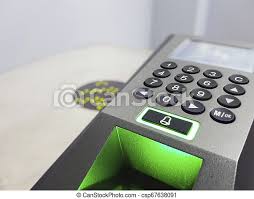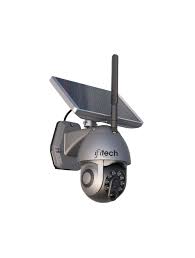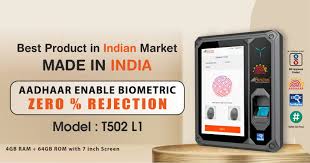Electronic Door Access: Enhancing Security and Convenience
In today’s fast-paced world, security is a top priority for individuals and businesses alike. Traditional lock and key systems have served us well for centuries, but with advancements in technology, electronic door access systems have emerged as a more secure and convenient alternative.
Electronic door access systems utilize various technologies such as key cards, key fobs, biometric scanners (fingerprint or retina recognition), or even smartphone apps to grant authorized individuals access to a building or specific areas within it. These systems offer numerous benefits that traditional locks cannot match.
Enhanced Security: One of the primary advantages of electronic door access systems is their ability to enhance security. Unlike traditional locks that can be easily picked or keys that can be lost or duplicated, electronic access requires unique credentials for entry. This significantly reduces the risk of unauthorized access and provides an audit trail of who enters and exits the premises.
Convenience and Flexibility: Electronic door access eliminates the need for physical keys, making it more convenient for users. With a simple swipe of a card or a scan of a fingerprint, authorized personnel can gain entry without fumbling with keys. Additionally, these systems offer flexibility in granting different levels of access to different individuals based on their roles or clearance levels.
Integration with Other Systems: Electronic door access systems can be seamlessly integrated with other security measures such as CCTV cameras, alarm systems, or even time and attendance tracking software. This integration enhances overall security by providing a comprehensive solution that can monitor and record all activities within the premises.
Remote Access Control: Another significant advantage is the ability to control access remotely. With electronic door access systems connected to network infrastructure, administrators can manage user permissions from anywhere using a computer or mobile device. This feature is particularly useful in scenarios where immediate changes need to be made without physically being present at the location.
Efficient Visitor Management: Electronic door access systems simplify visitor management processes. Instead of issuing temporary keys or constantly monitoring visitors, administrators can provide temporary access credentials that automatically expire after a specified time. This ensures that only authorized individuals have access to the premises, increasing security and reducing administrative burdens.
Cost-Effectiveness: While electronic door access systems may require an initial investment, they often prove to be cost-effective in the long run. Traditional lock and key systems require frequent rekeying or lock replacements in case of lost or stolen keys. With electronic access systems, credentials can be easily deactivated and reissued, saving time and money on locksmith services.
In conclusion, electronic door access systems offer a myriad of benefits over traditional lock and key systems. They provide enhanced security, convenience, flexibility, integration capabilities, remote access control, efficient visitor management, and long-term cost savings. Whether it’s for residential buildings, offices, educational institutions, or any other facility requiring controlled access, electronic door access systems are an excellent choice to ensure both security and convenience in today’s digital age.
Common Questions About Electronic Door Access: Explained
- What are the 3 types of access control?
- How much does electric door lock cost?
- What are the 4 types of access control?
- What is electronic access?
What are the 3 types of access control?
The three types of access control are:
- Physical Access Control: Physical access control refers to the measures taken to restrict or grant entry to a physical location or area. This can include traditional methods such as locks and keys, as well as electronic systems like card readers, keypads, or biometric scanners (fingerprint or retina recognition). Physical access control ensures that only authorized individuals can enter specific buildings, rooms, or areas within a facility.
- Logical Access Control: Logical access control is concerned with securing digital resources and information systems. It involves the use of usernames, passwords, encryption techniques, and other authentication methods to grant or deny access to computer networks, databases, software applications, or specific files and folders. Logical access control ensures that only authorized users can access sensitive data and perform certain actions within a digital environment.
- Administrative Access Control: Administrative access control involves the implementation of policies, procedures, and guidelines to manage user privileges and permissions. It focuses on the administrative aspects of granting or revoking access rights based on roles, responsibilities, and job functions within an organization. Administrative access control includes tasks such as user provisioning (creating accounts), defining user roles and permissions, monitoring user activities, conducting audits, and enforcing security policies.
These three types of access control work together to create comprehensive security measures for both physical locations and digital environments. By implementing a combination of physical, logical, and administrative controls, organizations can ensure that only authorized individuals have appropriate access to their resources while protecting against unauthorized entry or data breaches.
How much does electric door lock cost?
The cost of an electric door lock can vary depending on various factors such as the brand, features, and complexity of the system. Generally, basic electric door locks without advanced features can range from $50 to $200. These locks typically use keypads or key cards for access.
If you’re looking for more advanced electric door lock systems with additional features such as biometric scanners (fingerprint or retina recognition) or smartphone app integration, the price can range from $200 to $500 or more.
It’s important to note that installation costs are not included in these price ranges. Professional installation may be necessary depending on the complexity of the system and could incur additional charges.
To get an accurate cost estimate for your specific requirements, it is recommended to consult with a reputable locksmith or security system provider who can assess your needs and provide a detailed quote based on your preferences and the specific characteristics of your doors.
What are the 4 types of access control?
There are four primary types of access control commonly used in various settings:
- Discretionary Access Control (DAC): This type of access control gives the owner or administrator complete discretion to determine who has access to specific resources or areas. The owner can assign permissions and privileges based on their own judgment, without any predefined rules or restrictions.
- Mandatory Access Control (MAC): MAC is a more rigid form of access control that operates based on predefined security classifications and labels. Access decisions are made by a central authority, typically based on factors such as security clearances, job roles, or sensitivity levels of the resources being accessed. Users have limited control over granting or modifying access permissions.
- Role-Based Access Control (RBAC): RBAC assigns access permissions based on predefined roles within an organization. Instead of granting permissions to individual users, access is granted based on job functions or responsibilities. This simplifies administration by allowing administrators to manage user access at a role level rather than individually.
- Attribute-Based Access Control (ABAC): ABAC takes a more dynamic approach to access control by considering multiple attributes and conditions when granting or denying access. Attributes can include factors such as user identity, time of day, location, device used, and other contextual information. Policies are defined using rules and conditions that evaluate these attributes to determine whether access should be granted.
Each type of access control has its own strengths and suitability for different scenarios. Organizations often implement a combination of these types to create a comprehensive and secure access control system tailored to their specific needs.
What is electronic access?
Electronic access refers to a system or method of controlling entry to a building, room, or specific areas within a premises using electronic devices and technologies. It replaces traditional lock and key systems with advanced electronic mechanisms that grant or deny access based on authorized credentials.
Electronic access systems typically utilize various technologies such as key cards, key fobs, biometric scanners (such as fingerprint or retina recognition), or smartphone apps to authenticate individuals and allow entry. These systems are designed to enhance security, convenience, and efficiency in managing access control.
By using electronic access systems, administrators can easily manage and monitor who has access to specific areas of a building or premises. They can grant different levels of access based on roles or clearance levels, track entry and exit times, and even integrate the system with other security measures like CCTV cameras or alarm systems.
Electronic access offers several advantages over traditional lock and key systems. It reduces the risk of unauthorized entry by eliminating the vulnerabilities associated with physical keys. It provides an audit trail of who enters and exits the premises, enhancing security and accountability. Additionally, it offers convenience through features like remote access control management and efficient visitor management processes.
Overall, electronic access systems provide a modern approach to controlling entry into buildings or restricted areas within them. They offer enhanced security features while also providing convenience and flexibility for both administrators and authorized individuals accessing the premises.




